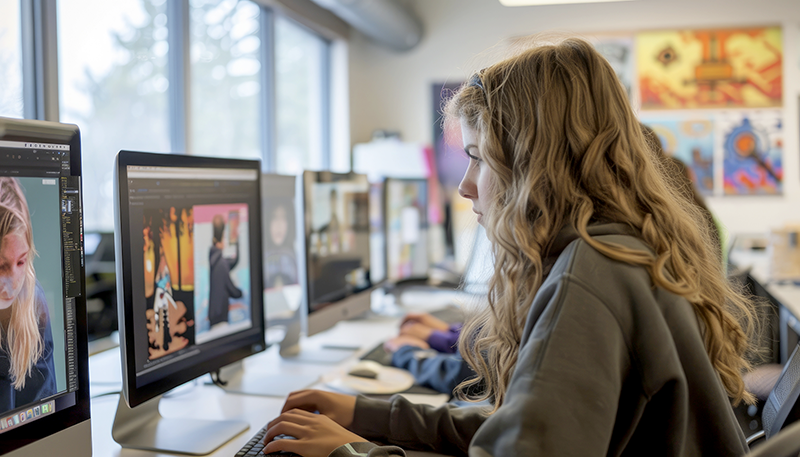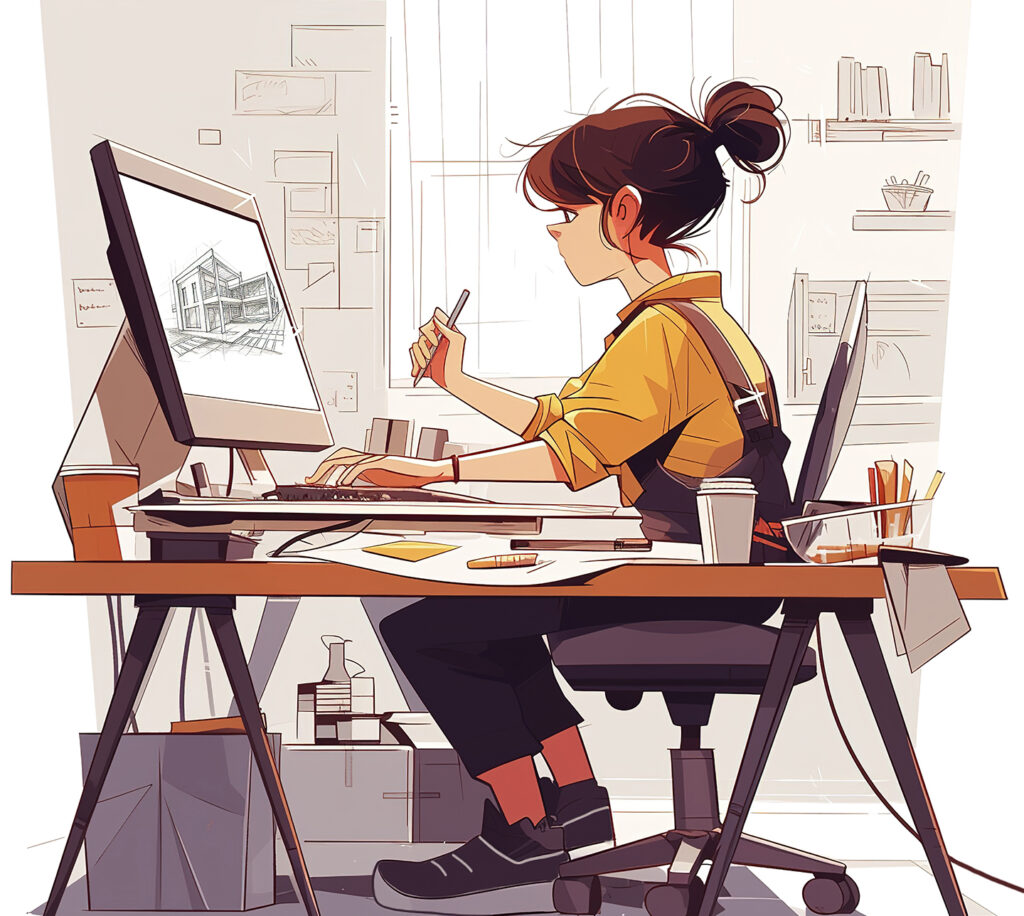Starting a career in graphic design can feel both exciting and overwhelming. You’ve got the passion, maybe some skills — but how do you get real experience that actually matters? The answer lies in graphic design apprenticeships.
Apprenticeships give you a backstage pass to the design industry. You get to learn on the job, collaborate with professionals, build a real portfolio, and gain the kind of experience that employers want. In this comprehensive guide, we’ll show you where to find the right apprenticeship, how to apply, and how to make the most of it, so your creative career starts with a bang.
Why a Graphic Design Apprenticeship Is Worth It
Before we dive into the where and how, let’s talk about the why. While degrees are great, employers often look for something else: experience and skill. A graphic design apprenticeship provides exactly that — not in theory, but in practice.
Here’s what you get:
- Hands-on training with real projects
- Mentorship from experienced designers
- Insight into the workflow of a creative agency
- Access to tools like Adobe Creative Cloud, Figma, Canva, and more
- A portfolio filled with professional-level work
- A chance to network with other creatives
It’s the real-world bridge between what you know and what the industry needs.

Best Places to Find Graphic Design Apprenticeships
Knowing where to look is half the battle. Thankfully, 2025 offers more opportunities than ever — both online and offline.
1. LinkedIn
This isn’t just a networking site. LinkedIn Jobs is packed with listings for apprenticeships, internships, and junior designer roles. Set up job alerts for terms like “graphic design apprentice” or “creative trainee.” Also, follow design companies, agencies, and creative recruiters.
2. Behance & Dribbble
These platforms are much more than just portfolio showcases. Creative directors and companies often scout talent here. Add “Open for apprenticeships” to your profile bio, update your portfolio regularly, and interact with design communities.
3. Job Boards for Creatives
Sites like:
- DesignJobsBoard.com
- If You Could Jobs
- Working Not Working
- The Dots (UK-based but global-friendly)
…regularly feature graphic design apprenticeships and junior roles.
4. Freelance Marketplaces
Platforms like Upwork, Fiverr, or PeoplePerHour might not have formal apprenticeships, but many clients seek recurring design help. Offer discounted packages or pitch long-term collaboration ideas — that’s apprenticeship in action.
5. Local Studios and Agencies
Sometimes, the best opportunities aren’t online. Make a list of 10–15 local design studios. Visit their websites, look at their team and style, and send a short, personalized message with your portfolio link. Even if they don’t advertise roles, speculative applications often work.

What Skills You Should Know Before Applying
You don’t need to be an expert to land an apprenticeship, but a strong foundation helps. Here are some basics you should feel confident about:
- Typography, layout, and color theory
- Tools like Photoshop, Illustrator, and InDesign
- Basic knowledge of branding and composition
- Bonus: understanding of Figma or web design tools
Also, soft skills matter — communication, teamwork, time management, and a willingness to learn are just as valuable as your creative flair.
How to Make Your Application Stand Out
1. Build a Clean, Focused Portfolio
Quality over quantity. Pick 5–8 of your best works — logo designs, posters, social media creatives, mock branding, UI layouts — and explain each project with a short caption about the idea behind it. Tools like Adobe Portfolio, Notion, or even Google Sites can help you set this up quickly.
2. Write a Tailored Cover Letter
Every application should feel personal. Mention what excites you about the company, what you hope to learn, and how you plan to contribute. Keep it short — 3–4 paragraphs max.
3. Design Your Resume
You’re applying for a creative role — your resume should reflect that. Use clean layouts, subtle color, and design-thinking in how you present your experience.
What to Expect During the Apprenticeship
Once you’re in, it’s time to learn. You’ll be exposed to:
- Real client projects and deadlines
- Feedback from senior designers
- Creative brainstorming sessions
- Collaboration using tools like Trello, Slack, Asana, or Notion
- A mix of print and digital design tasks
And remember: It’s okay to not know everything. Ask questions, be curious, and show up with a growth mindset. That’s what apprenticeships are for.

How to Succeed and Get Hired Afterward
Want to turn your apprenticeship into a full-time job? Follow these simple tips:
- Be proactive — volunteer for tasks, suggest ideas, offer help
- Ask for feedback regularly and actually apply it
- Document your progress — update your portfolio with every finished project
- Build strong relationships with your team
At the end of the apprenticeship, ask for a testimonial or recommendation, even if the company isn’t hiring full-time. That reference could help you land your next role.
Common Mistakes to Avoid
- Sending a generic resume to every company
- Applying without a portfolio
- Not following up after 7–10 days
- Ignoring smaller agencies — they often give the best experience
- Failing to show your passion — your “why” is as important as your “what”
In the world of graphic design, your skills grow with practice, not just theory. That’s why an apprenticeship isn’t just a good idea — it’s the smartest way to build a long-lasting, fulfilling creative career.
The right opportunity is out there waiting. Start by building your portfolio, learning the tools, and putting yourself out into the creative world. Apply. Learn. Create. Repeat. That’s how great designers are made.





